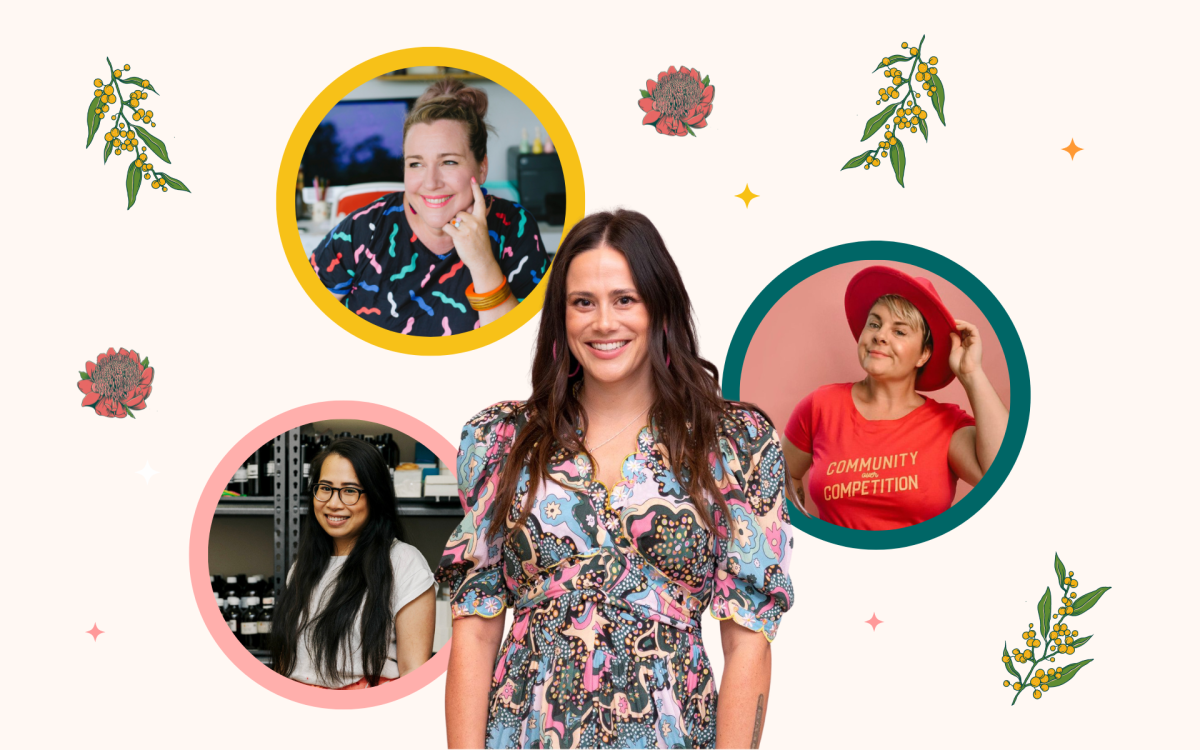Do you ever feel like your personal life is becoming inseparable from your social media presence? Or maybe it’s social media invading your personal boundaries?
This is one of the topics of discussion at the upcoming, Make Good Things Happen, Makers in Business Online Symposium from 5 – 6 August.
ArtsHub spoke with Make Good Things Happen co-founder Renee Baker, and three makers who shared their insights.
Q: How much of your personal life makes up your brand and creative practice?
A: I am my brand
Kirsten Devitt began her home based craft business in 2009. She is now the owner and designer of homewares brand Each To Own (@eachtoown) in Brisbane, Keep-oh and Small Works Gallery.
Devitt offered: ’It’s hard to separate your personality from your brand when you are a maker. Everything that you create is intrinsically you putting yourself out there.’
She continued that ’however, you can control how much or how little you show of your personal life. I try to show who the person behind my brand is in an honest and not overly-curated way.’
Renee Baker differs slightly. She said: ’Honestly, I’ve always kept my personal life very personal!
‘I think if anyone was to critique the @mgth.com.au Instagram account they would ask to see more of my personality. I tend to share more personal details like my interests, hobbies etc with members of our community in a 1:1 way.’
On the other hand, for Amy Clarke, founder of feminist apparel brand Confetti Rebels (@confetti_rebels), and Thailand-born web developer turned candle maker Waan Pivasiri (@youmeandbones), these two aspects of their lives are closely interlinked.
Clarke said: ‘It’s really hard [to separate] as my brand IS ME. Every product I create resonates strongly with me, hence why I am so passionate about what I do.’
Pivasiri agreed: ’I started making candles in the shapes I wanted in my own home. My branding and social media revolves around my personality as well.’
Q. What are your tips on maintaining personal boundaries on social media?
A: Stay in charge, and unplug
Baker advised: ’As someone who mentors makers on this very thing, my suggestion is first to remember that you’re the one who is in charge of what you share.
‘It helps to create a document that outlines your boundaries and what you’re comfortable sharing. For example, maybe you’re happy to share a photo of your child, but never in school uniform and always with their permission. Having the boundaries written down as part of your brand guidelines helps you keep them,’ she added.
Pivasiri gave an example, saying that ’I’m very friendly with my followers and supporters and am happy for a little chat, but I do not answer any business questions at night and I advise people to email me for any business related questions.’
Sometimes just putting away the phone can be a mindful exercise. Clarke added: ‘Give yourself permission to unplug from social media content. Whether you are the poster or viewer it is important to log off.’
Put a firm hand up to people who do not bring positivity and empathy to you and your followers.
Kirsten Devitt
In Devitt’s view, creating authenticity around your online presence is more important than trying to generate more content or likes.
She said: ’I find that people do identify with, and appreciate, vulnerability more than staged/styled personas. Be you and be honest, and you will find inspiring connections and a loyal customer base.’
If there are any interactions that is out of your comfort zone, ’a quick DM asking for politeness and kindness, or for them to go and find something more fulfilling for themselves elsewhere is totally acceptable,’ Devitt added.
Q. What’s the one thing you wish you’d knew before you started?
A: Planning without compromising authenticity
Trying to keep up with the latest trends can be difficult, Pivasiri advised: ’Staying relevant on social media is actually trickier than I thought it would be. I suggest planning your week or month so you have something to post every day/ every couple of days.’
Clarke’s advice also emphasises authenticity. She offered: ’Stop posting for everyone else! Post for you, and your art, and your business. That way authenticity will shine through!’
Read: 27 things I learned starting a new art business
Devitt added to keep true to yourself. ’Swim strongly in your own lane, only lifting your head to cheer others on or to collaborate. If you don’t feel like doing either of those things then stick to doing the things that nurture you.’
What Devitt found is that ‘scrolling a million little squares on a comparison drive will only take you to places that diminish your creative spirit’.
Baker concluded: ’Remind yourself that you’re an artist/maker first, not a content creator. Likes don’t necessarily equal sales.
‘If you’re feeling disheartened by the process, it’s time to step away from the feed and get back into the studio doing what you love.’
Makers in Business Online Sympsoum runs across 2 days from 5 – 6 August; find out more and register.





